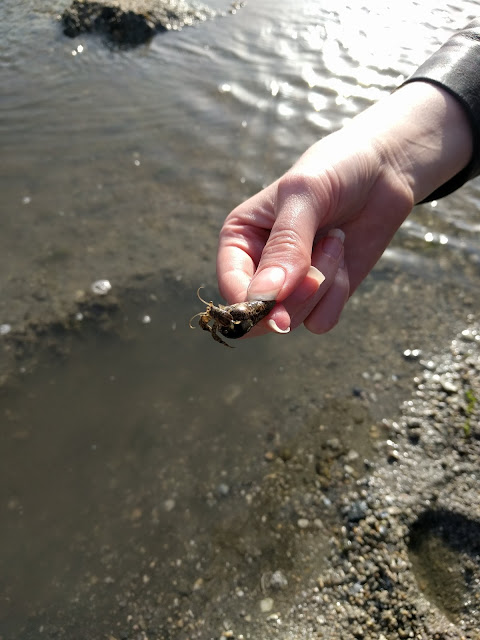While Kate stayed in Kyoto another day (primarily, let's be honest, to spend all day in the International Manga Museum without m trading her incessantly), I headed to Mount Koya, also known as Koyasan (the town). Koyasan is a mountain in central Japan that i home to hundreds of temples, some of which offer lodging, monk-style, known as shukubo. Guests stay in the temple grounds, are given monk food (vegetarian, lots of mushrooms), and use facilities that monks typically use - a floor mat bed, traditional pajamas, etc - and can participate in the religious ceremony in the morning. This sounded like just the sort of experience I love, so I signed up for one night.
Turns out getting to Koyasan was a little bit harder than I bargained for. One-way took me five hours the way there, three and a half the way back. (Let's not talk about what happened the way there.) After one subway ride, three train rides, a cable car jaunt, and some bus time, I finally arrived at my destination: Jimyo-in, a temple on the main street in town. Koyasan is a very small town, with the main street no more than a few miles long, traversing the entire length of the town. On one end stands a famous old cemetery, "The Angkor Wat of Japan," as one monk described it. It's full of the tombs of ancient feudal lords, monks, and others noteworthy enough to gain a spot. The most famous resident is Kobo Daishi, who in 835AD was forced to commit suicide according to placards at the site, but died of an illness according to the internet. No comment from me as to which is truer. Near his mausoleum he's a house of lanterns, which holds lanterns donated by thousands of people. Of the scores of lanterns, three remain continuously burning since they were donated: a lantern donated by a poor woman in 1016, who sold her hair to buy the lantern in memory of her deceased parents; a lantern donated by an emperor in 1033; and one donated by Emperor Showa in 1948. Those dates are incredible--the woman's lantern has been burning continuously for over 1,000 years!
Below: cemetery pictures
After wandering the cemetery, I returned to the temple and immediately (and accidentally) stomped all over the carefully raked stones and wore my shoes into the entryway (apparently, you take them off while still outside). The monks sighed, but with their ever-forgiving spirits, or perhaps for their own penance, have me the nicest room in the place. I had the most beautiful view of the garden, normally a luxury I would have to pay double for. The room has the most lovely view of the gardens, and a magical low table with a heater underneath and a comforter on top, so you'd stick your legs under the table for beautiful warmth while your fingers turned numb. Other than that, furniture was very limited, except for (I was disappointed to note) a TV. Who watches TV at a temple?
Below: monk life
Anyway, dinner was served to me alone in my room, as was traditional, and consisted mainly of cold mushroom dishes, tofu, and cold vegetables. It wasn't the best food I've ever had, but if monks could do it, so could I. Just as I was contemplating how to sleep in the hard, bamboo-mat floor, my server brought in soft thick pass to serve as a mattress, a warm comforter, and a straw pillow. The pillow was not in fact made of straw, but of short plastic hollow cylinders, and was surprisingly comfortable. Breakfast was much the same, and the religious ceremonial of incense and chanting. I think I was supposed to sit on my feet the whole time, but my feet kept falling asleep so I switched every few monutes, hoping to avoid monk glares (I heard they can be lethal). The most surprising aspect was how much time I spent alone; I'm not used to thay,but it was a good chance for me to reflect on where I've been these past two months, and cement my memories.
Below: sad monk food, monk pajamas, and padded bed
After my sad monk breakfast, I left town to rejoin Kate and travel to Hiroshima, where we'd stay one night. It wasn't a long visit, but we wanted to see the famous floating Torii (gate) and see the Peace Park, where the A-Bomb dome lies. The floating gate was first - it required a bit of a journey to the seaside, but it was worth it. Plus we saw more tiny deer and lots of little crabbies in the mud! Alas, the gates don't look floating in my pictures since high tide is morning and night, and we could only manage an afternoon visit, but they were majestic nonetheless.
Below: Torii gates and baby hermit crabs
The next day came for Peace Park. There were many sculptures to the victims of the atom bomb, but the most sombering sight was definitely the A-bomb dome itself. This building is one of few to even partially survive the attack, which obliterated almost the entire city. It's a haunting reminder of the destructive power of nuclear weapons and war. Over 140,000 people died in the Hiroshima attack, 70,000 instantaneously, and the rest later as a result of radiation exposure. After Japan rebuilt Hiroshima, they declared it a city of peace.
Below: Hiroshima, plus A -bomb dome before and after, paper cranes for the dead
Afterwards, Kate and I wandered Hiroshima downtown a bit before stopping at a sushi place for our final lunch in Japan. That afternoon we took a bullet train back to Tokyo,and the next morning I left for my flight home!

































No comments:
Post a Comment